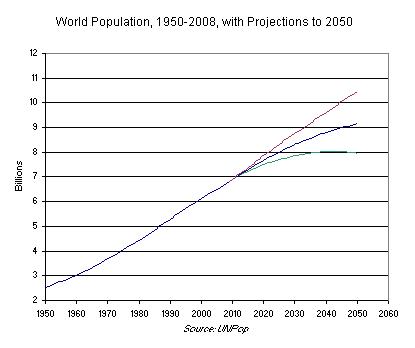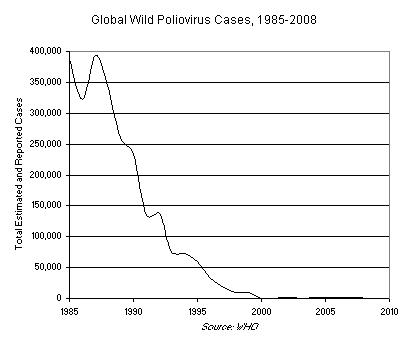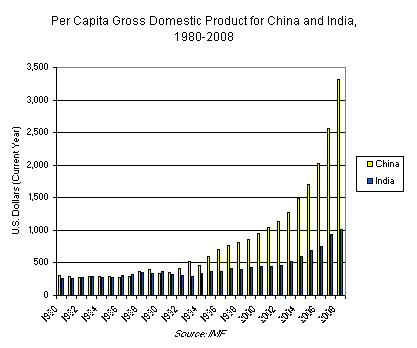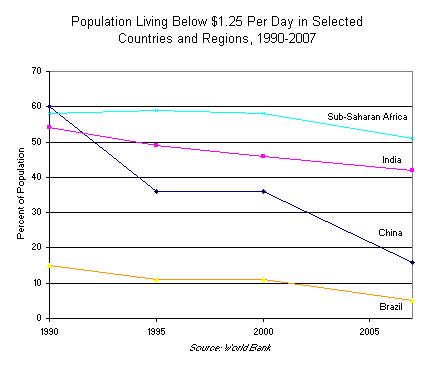"Plan B is shaped by what is needed to save civilization, not by what may currently be considered politically feasible." –Lester R. Brown, Plan B 3.0: Mobilizing to Save Civilization
In Chapter 7 of the recently released Plan B 4.0: Mobilizing to Save Civilization, Lester Brown lays out the Plan B goals for eradicating poverty and stabilizing population. Behind the scenes are a number of datasets and graphs that delve deeper into the trends discussed in the chapter. Here are some highlights from the Chapter 7 data:
World population has grown steadily over the past half century, increasing from 2.5 billion in 1950 to a projected 6.8 billion in 2009. The United Nations medium fertility level scenario projects that world population will grow to 9.2 billion in 2050. Their high projection takes the world to 10.5 billion in 2050. Under their low projection, which assumes rapid reductions in fertility rates, population peaks at just over 8 billion in 2042, then begins to decline.
Though life expectancies around the world have increased in the past half century, large discrepancies remain among different regions. Overall, world life expectancy increased from an average of 47 years in the mid-twentieth century to 68 years today. While life expectancy in 1950 hovered around 40 years in both Sub-Saharan Africa and Asia, it has since increased far more rapidly in Asia, reaching 69 years, compared to 51 years in Sub-Saharan Africa. On a regional basis, the United States and Canada top the world with an average life expectancy of 79 years.
Leading causes of death also vary widely across regions. In low-income countries, 18 percent of deaths are caused by infectious or parasitic diseases, such as HIV/AIDS, tuberculosis, and diarrheal diseases. Such diseases cause only 2.5 percent of deaths in high-income countries.
Some progress, however, has been made in fighting infectious disease in low-income countries. Thanks to an international vaccine campaign, the number of polio cases worldwide has dropped from close to 400,000 in 1987 to fewer than 2,000 in 2008.
On the economic front, China and India, the two most populous countries in the world, have experienced significant economic growth over the past several decades. However, while India’s gross domestic product (GDP) of $363 per person in 1990 just barely exceeded China’s, since then, China’s per capita GDP has grown 10-fold, while India’s has grown only 3-fold.
As countries have experienced economic growth, poverty rates have declined, though discrepancies again exist between countries and regions. Poverty rates in China have declined significantly, from 60 percent of the population in 1990 to 16 percent in 2007. Brazil, another success story, has reduced poverty rates by two-thirds, from 15 percent to 5 percent over the same period. India’s poverty rate has declined more modestly, from slightly over half the population in 1990 to 42 percent in 2007. Sub-Saharan Africa has also made slow progress, with poverty rates declining from 58 percent to 51 percent over the same period.
These data highlights show that while there have been some successes in the fight to reduce poverty and improve quality of life around the world, many challenges remain, particularly in the face of continuing population growth. You can download our datasets at www.earth-policy.org/books/pb4/pb4_data to learn more about the Plan B proposals for eradicating poverty and stabilizing population – goals that play an important role in the mobilization to save civilization.


 Print:
Print:  Email
Email



